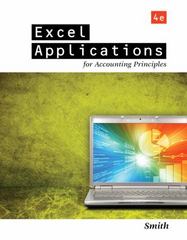I am taking my first accounting class online (managerial accounting). I am trying to work the problem listed below and am stuck at the activity based costing section. I am unsure what information they are looking for. I am providing an copy of everything on the page since the section tells me to refer to the section I already completed. Can you please explain to me how I am to solve Activity-Based Costing and Activity-based costing for varying batch production sections.
Mastery Problem: Activity-Based Costing (Advanced) Activity-Based Costing Traditionally, overhead costs are assigned based arbitrarily on the rate of either direct labor or direct materials associated with production. This makes sense when companies only make a few products, production processes are simple, and overhead costs are less pervasive. However, today production processes are more complex, companies make a wider array of products, and fewer costs are directly traceable to units of production. To address this, companies use activity-based costing (ABC). Specifically, activity-based costing identifies and traces costs and expenses to activities and then to specific products. ABC uses multiple factory overhead rates based on activities. Activities are the types of work, or actions, involved in a manufacturing process or service activity. For example, assembly, inspection, and engineering design are activities. The estimated activity costs are allocated to products using an activity rate. Activity rates are determined as follows: Activity Rate = Estimated Activity Cost / Estimated Activity Base Usage Comparing Two Products under Traditional and Activity-Based Costing Compare two projects under development by the same company. The following are a few aspects of each product's development process relevant to costs. Product S Product T Requires 3,200 hours of testing Requires 800 hours of testing Requires 4,900 units of computing power Requires 2,100 units of computing power Requires 30 developer hours to implement Requires 70 developer hours to implement Cost Items Testing: Computing power: Developer hourly cost: Cost of Each Activity $30,800 $46,200 $15 per hour Traditional Costing Traditional costing would take the proportion of a direct cost, such as direct labor hours, and use it as the basis for allocating overhead costs, such as computing power and testing. In the following table, use developer hours as the basis for assigning overhead costs (computing and developer costs) to each project. If required, round your answers to the nearest dollar. Product S Product T Percentage of developer hours Testing cost Computing cost Developer cost Total cost 30% $ $ $ $ Percentage of developer hours 9240 Testing cost 13860 Computing cost 450 Developer cost 23550 Total cost Percentage of developer hours + Percentage of developer hours for Product S (30%) Allocation basis for Product S: The amount of labor hours associated directly with Product S, as a percentage of all developer hours worked (regardless of product). The amounts for overhead to be allocated are multiplied by this value to determine the overhead to be assigned to Product S under the traditional costing method. 30 (30+70) 70% $ $ $ $ 21560 32340 1050 54950 + Percentage of developer hours for Product T (70%) Allocation basis for Product T: The amount of labor hours associated directly with Product T, as a percentage of all developer hours worked (regardless of product). The amounts for overhead to be allocated are multiplied by this value to determine the overhead to be assigned to Product T under the traditional costing method. 70 (30+70) Review the resources each product (S and T) requires for production and compare that to the costs calculated above under traditional costing. Does traditional costing serve as an accurate gauge of costs? Activity-Based Costing Using the data above for products S and T, calculate the costs using activity-based costing. Allocate the costs of testing, computing, and development based on the rates of activity consumed by each product's development process. If required in your computations, round per unit costs to the nearest cent. Round your final answers to the nearest dollar. Cost Activity Base Testing Hours of testing Computing cost Units of computing power Developer cost Development hours Product S Testing cost $ Computing cost $ Developer cost $ Total cost 1. 2. $ Product T Testing cost Computing cost Developer cost Total cost $ $ $ $ Activity-based costing for varying batch production A manufacturing company has the following two activities associated with completion of products: The setting up of machines for running batches of products The actual production of units produced The company has annual manufacturing overhead costs of $2,000,000, of which $200,000 is directly involved in setting up machines for batch runs. During the year, the company expects to perform 400 machine setups, one setup per batch for a total of 400 batches of production. Assume that the batch sizes vary considerably, but the work involved in setting up the machines is not appreciably different from one job to the next. If the company estimates that the $200,000 costs associated with setups will yield 400 setups this year, the cost associated directly with each setup will be $ per setup. Because each job will require its own setup, setup costs are viewed as batch costs. Because $200,000 of the $2,000,000 are costs associated with setups, this means that costs associated directly with the production of units equal $







